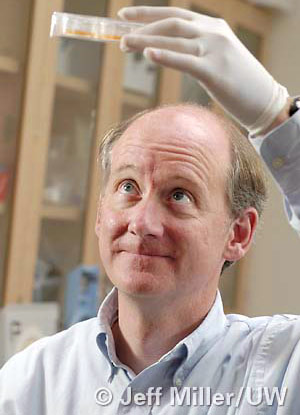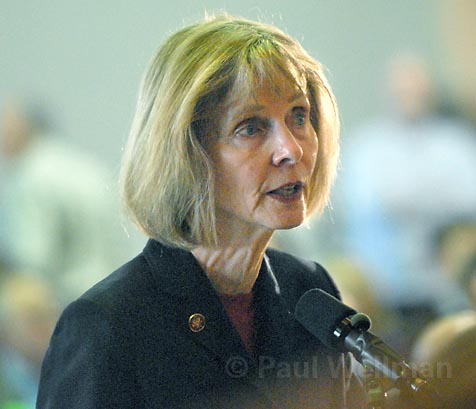UCSB to Reap Benefits of Stem Cell Grant
Lois Capps Praises Stem Cell Research Despite Other Politicians' Opposition

In order to continue its mission of expanding the frontier of stem cell research, the California Institute for Regenerative Medicine on May 7 awarded a total of $180 million to the University of California, $3.2 million of which went to UCSB’s Center of Stem Cell Biology and Engineering.

Currently, stem cell research focuses on renewal and differentiation of stem cells and the molecular mechanisms of its pluripotency – or their ability to develop into any type of cell – using human embryonic stem cells, induced pluripotent stem cells, and stem cells in simpler organisms. Congresswoman Lois Capps addressed the benefits of these studies Wednesday for the Energy and Commerce Committee’s Health Subcommittee hearing on stem cell research in Washington, D.C., applauding researcher’s diligence despite administration interventions prohibiting federally funded embryonic stem cell research. “It is quite frankly embarrassing to have taken this big step backward over the past few years as the rest of the world has soared ahead,” said Capps. “Our nation’s leading scientists know the facts. They know that both adult and embryonic stem cell research hold the potential to cure some of humanity’s most devastating diseases: cancer, diabetes, Parkinson’s, Alzheimer’s and. I’m sure, many more.”
In order to expedite medicinal applications, the grants will fund three research facilities free of federal funding to conduct embryonic stem cell research within federal restrictions; various stem cell research centers which support across-the-spectrum collaborations; and current facilities to improve research.
“UC is grateful for all the support CIRM has given to our scientists in this important field,” said University of California President Robert Dynes. “The grants will allow UC to build the next generation of research infrastructure that will help continue our efforts to realize the enormous potential of stem cell technology.”
New UC developments will contribute to the three categories of research CIRM hopes to establish: basic stem cell research and discovery, preclinical and clinical research, and preclinical development; centers of excellence which will work with any duel combination of stem cell discovery, clinical research and preclinical development; and special programs which will work with specialized research programs.

According to UCSB’s chair of the Department of Cellular, Molecular and Developmental Biology (MCDB), Dennis Clegg, the CIRM Special Program is a crucial factor in the expansion of stem cell research. “[It] will greatly stimulate growth of stem cell research on the UCSB campus,” said Clegg. “It will facilitate new, interdisciplinary research projects that would otherwise be impossible due to federal restrictions and lack of suitable space.”
The UCSB project has a total budget of $6.3 million to renovate 10, 337 square feet of the seven-story Biological Sciences 2 building. Coinciding with CIRM’s goals, three of the floors planned for renovation will accommodate the collaborative work of top stem cell researcher and UCSB professor James Thompson, who was the first to isolate human embryonic cells in 1998; the new Mellichamp and Ruth Garland Chairs of bioengineering and molecular mechanisms, respectively; and the “Deep Sequencing Core,” which will house, among other things, a device that will help develop new genetic approaches to important cell biology inquiries.
In addition, UCSB has been developing relations with major biotechnology companies in order to more rapidly share and apply its findings and has collaborated with five other research institutions to form Southern California Stem Cell Scientific Collaboration to share experiences and ideas.
Capps said that while California has made huge advances in stem cell research, state and private funding are only pieces of the puzzle. “Federal dollars, predominantly through the NIH, are the primary source of funding for basic research – the kind of research that identifies the fundamentals for future research that will eventually lead to cures,” she said.



